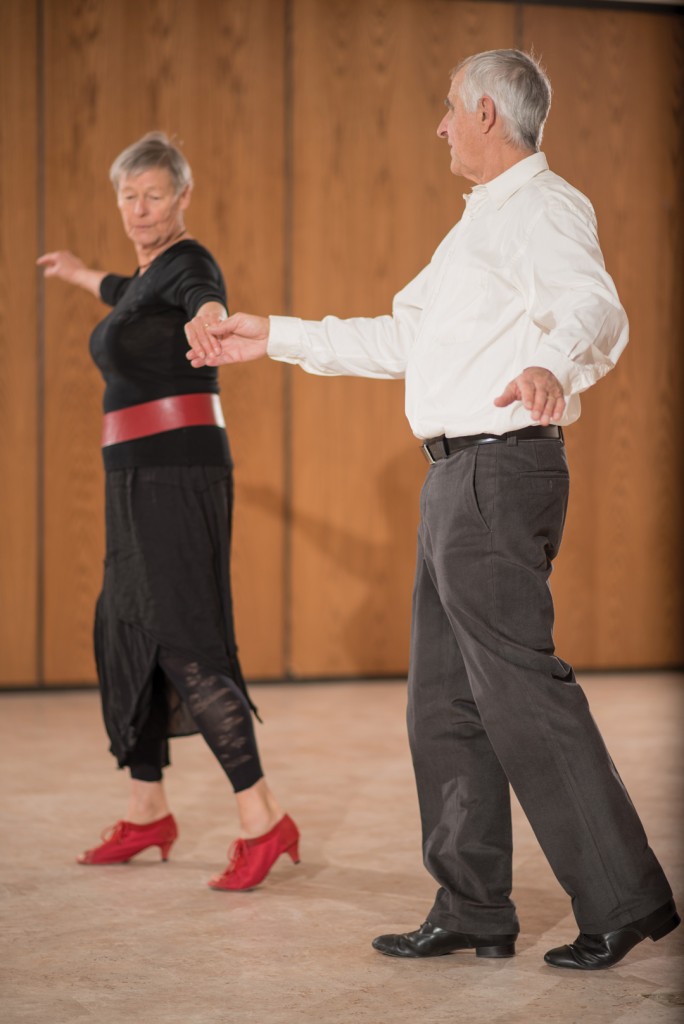CREAM OF THE CROP
PROLIFIC WHEAT BREEDER RON DEPAUW GOES BACK TO THE FUTURE
BY JEFF DAVIS
Few people outside of the research community know Ron DePauw’s name, but chances are you have been eating the fruits of his labours for decades—maybe even your whole life.
Amongst science nerds, this 71-year-old is a living legend, a sort of Wayne Gretzky of wheat breeding. When you look at his career stats, it’s easy to see why. For much of the past two decades, 40 to 55 per cent of Canada’s total wheat crop has been made up of cultivars produced by DePauw and his team.
Throughout his decades-long career as one of the world’s most influential grain breeders, DePauw has amassed a staggering list of accomplishments, both public and private. Now, on the verge of a retirement that will be chock full of everything from judo to ballroom dancing, DePauw says wheat, as a major part of the human diet, is here to stay.
Formally, Ron DePauw, PhD, is the senior principal wheat breeder at the Semiarid Prairie Agricultural Research Centre in Swift Current, SK.
“This institution is responsible for agriculture in the semi-arid Prairie strip, which covers the brown soil zone, a lot of the dark brown soil zone and a lot of the black,” he said. “This counts for about a third of the arable crop land, and we’re developing farmlands and genetic products that will tolerate the drought and heat conditions.
“In this environment, water, drought, heat, high winds and moisture deficit are the primary limiting factors of production.”
Similar climatic conditions are found between 45 and 60 degrees latitude, in both the Northern and Southern Hemispheres. As such, scientific breakthroughs made in Swift Current have been put to use everywhere from Siberia and Kazakhstan to Argentina and New Zealand.
Born in Kamsack, SK, in 1944, and raised on a farm in Treherne, MB, DePauw showed an early interest in agriculture, participating in his local 4-H seed club. He studied undergraduate science at the University of Manitoba before heading on to master’s-level studies in botany and philosophy at St. Louis University in Missouri.
It was during his master’s studies that DePauw first heard of, then enthusiastically embraced, the Japanese martial art of judo.
“I started doing judo back in ’62, before everyone in this room was born.” he said, provoking a chuckle from his students at the local dojo. “My roommate saw the advertisement for the class and asked me if I wanted to try. I’ve stuck with it ever since.”
Ghrandozz Aguilar, an 11-year-old Grade 6 student, has been studying judo under DePauw for five years and holds the rank of green belt.
“Ron is my favourite teacher,” Aguilar said. “He just teaches me well, and has taught me a lot. He always helps me with the figures that I have to do for tests.”
Leanne Marchand’s husband and son are both students at the judo club, as well. She said DePauw is very active both physically and in the community, and that the kids look up to his quiet authority.
“I like him very much, and my son has a lot of respect for him and looks up to him quite a bit,” she said. “When Ron is around, my son Sebastian takes his judo a lot more seriously.”
Judo is a defensive art, DePauw explained, as he showed off an impressive arsenal of hip throws, hold-downs, arm bars and strangles. While he said his joints are a little creaky, he shows no sign of slowing down.
“Judo means ‘the gentle way,’” he said. “It’s not force against force; you use the force of the other to immobilize and defeat him.”
DePauw graduated with his master’s and, with two academic degrees under his judo belt, he thirsted for adventure. This desire led him to Eastern Africa, where he settled for three years in Kenya to assist farmers in that country in coping with semi-arid conditions similar to those found back home in Saskatchewan. DePauw was dispatched to a plant breeding station in the town of Njoro, where the Canadian International Development Agency was administering a project.
It was there that he had a chance meeting with a dauntless and indepe-ndent-minded Dane who would change his life. Her name was Elsa Marie, and she was also in Kenya doing development work. She was on a short visit to Njoro, but after that day the two were rarely apart—50 years later, DePauw returns home to eat lunch with Elsa Marie every day at noon.
After returning from Kenya, DePauw received his doctorate in plant genetics from the University of Manitoba, and settled down in Swift Current.
Since 1993, Ron and Elsa Marie DePauw have been honing their skills in their favourite joint pastime: choreographed ballroom dancing.
“We do both choreographed ballroom dancing and social dancing, from the Peace River region in the north to San Diego and Mexico in the south,” DePauw said. “We dance in bars, casinos and clubs.”
Watching these two turtledoves engaged in complex dances like the jive, foxtrot and rumba is something to see. They laugh and swing as they perform intricate moves like the fencepost, cheek-to-cheek and hook turn. Sometimes they make a misstep, but it’s rare and usually gets some razzing out of Elsa Marie.
“That’s the key to a good marriage,” Elsa Marie said after getting her toes trampled. “Let the man lead.”
Unlike casual dancing, choreo-graphed ballroom dancing is a precise set of moves that must be studied and practised. There are clear parallels with judo, giving some insight into the methodical mind that has had such a tremendous effect on Canada’s food system.
Over the years, the biggest change DePauw has seen in wheat breeding has been the relentless march of technology. He said innovations such as computing, biotechnology and especially near-infrared technology were indispensable in his work.
“The amount of data we can handle now is incredible, just incredible,” he said.
Perhaps the largest feather in DePauw’s multi-plumed cap is the development of Canadian Prairie Spring, a whole new class of wheat that overcame the negative correlation between grain yield and protein content. Another of his cultivars, AC Barrie, became the most commonly grown wheat in Canada between 1998 and 2005, while another, Lillian, was the most grown variety for four years. The list goes on and on.
During our extended interview, I couldn’t resist asking DePauw for his opinion on gluten, the much-maligned wheat component blamed these days for numerous dietary ailments in influential books like Wheat Belly and Grain Brain.
At its simplest, DePauw said, gluten is a combination of two wheat proteins that are highly prized in cooking for their elastic properties.
“They form a protienaceous starch matrix, so you can make pizzas with it, or stretch it this way and that to make noodles,” he said. “When you put yeast with it, it helps trap carbon dioxide bubbles to make bread rise.”
Humans have eaten gluten since wheat was first cultivated in the Fertile Crescent nearly 10,000 years ago, DePauw said, and largely without incident. And while the wheat in gluten hasn’t changed much since then, the ways we use it have.
“We are not consuming wheat as it was made, or processed even, 100 years ago,” he said. “Industrial bakeries didn’t exist 100 years ago, and processed food ready to obtain in grocery stores is a very recent phenomenon, really in the last 50 or 60 years.”
During food processing, gluten is added to virtually all ready-to-eat products, which take advantage of its physical and elastic properties. It is even added to things like potato chips, DePauw said, and many other products that haven’t traditionally contained any wheat at all.
“Finding gluten in all these food products is something new,” he said.
DePauw shared the story of Winnipeg-based food scientist Nancy Ames, who has been experimenting with new recipes for barley tortillas. In small batches, they would hold their round shape, but Ames ran into problems when producing them on a larger scale. When winding through the production line, DePauw said, centripetal forces would cause them to break.
“So these poor little tortillas, when they’d been going around the corner, the outer side would speed up and tear,” he said. “So to solve the problem, they put a little gluten in it.
“So the long and the short of it is, since so much processed food is using gluten in the manufacturing process, the gluten load in our lives has increased,” he explained. “It is a natural component, but we are just eating so much of it.”
So what are DePauw’s top three all-time favourite wheat-based foods?
He squirmed briefly, his mind hard at work analyzing the abundant options.
“Elsa Marie’s homemade bread.
“Then it would have to be Elsa Marie’s homemade pizza.”
He paused for a long moment before Elsa Marie chimed in with mock offence, reminding him in her precise European accent of another one of her culinary specialities.
“Ah yes, Elsa Marie’s homemade pasta,” he said with the broad grin of one well fed.
An obvious theme can be discerned about the eating habits in the DePauw household: They eat real, honest-to-goodness, homemade food.
As a scientist, DePauw sagely reserves judgment on the whole gluten issue, saying more research is needed. He cites concerns about processed foods that need more research, but despite these concerns, DePauw is certain that wheat is here to stay. Grown in virtually every country from 60 degrees north to the southern tip of Argentina, and from sea level to 9,000 feet, wheat is an omnipresent feature of human life.
“Wheat is accounting for about 20 per cent of the calories consumed globally by humans,” DePauw said. “It’s like rice, one of the major food crops. It’s a very good source of protein, well balanced in the amino acids, and can be manufactured into a great diversity of products.”
Wheat is also highly convenient, he said, evidenced by the fact that sandwiches and burgers are the go-to convenience foods in the West, while wheat-based noodles play that role throughout Asia.
The big question is whether there will be enough wheat to go around, DePauw explained.
“The world population will be over nine billion by 2050, and to feed everyone, we will have to increase food productivity by 60 per cent—off the same or less arable land base.”
Throughout the Middle East, Northern Africa and Central Asia, there are about one billion people who consume wheat as their primary food source, he said. And in these areas, he added, climate change is causing deserts to expand by kilometres each year, cutting deep into grasslands where wheat is grown.
Meanwhile, in Canada, the cloud of climate change may have a silver lining.
“There is an opportunity for us in Canada,” he said. “There are some projections that yes, there will be much more wild weather, but the growing seasons will lengthen and some of our areas to the north will be more suitable for arable crops.”
DePaw said the real macroeconomic challenge will be stoking the economies of these poor, climate-change-stricken countries so people who are currently living on an average of $2 per day can buy Canada’s bumper grain crop.
“We’ve got to get them into the economic sphere so they can purchase our wheat,” DePauw said. “I mean we can’t give it away, it’s not sustainable.”
While this may seem an insurmou-
ntable challenge, if it is not solved, the realpolitik of empty bellies will make
the world an even more unstable place, he said.
“If we want to bring an end to what’s going on in the Middle East, we’d better be addressing that income inequality. If we don’t address it, people are going to be doing things with guns.
“You’d almost think I was a Quaker or something,” he added with a laugh.
Though his retirement looms, DePauw’s schedule is rapidly filling up with requests to share his expertise.
“My official retirement date is going to be March 20,” he said, “but I’ll then be going down to Mexico to give some lectures, and I’ve been asked to become more involved in the Science, Spirituality and Health Research Institute in Calgary.”
For his tremendous achievements, DePauw was named to the Saskatchewan Order of Merit and is a fellow of both the Canadian Society of Agronomy and the Agricultural Institute of Canada. In 2004, he was named to the Order of Canada, being praised for his work shaping the western agricultural industry.
“He was the lead architect of an important new class of wheat,” his citation reads. “Characterized by their high protein content and resistance to disease, these cultivars rank among the world’s best and have opened new markets for farmers in Western Canada.”










Comments